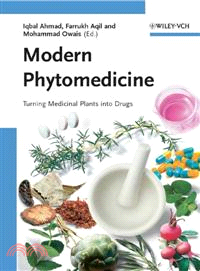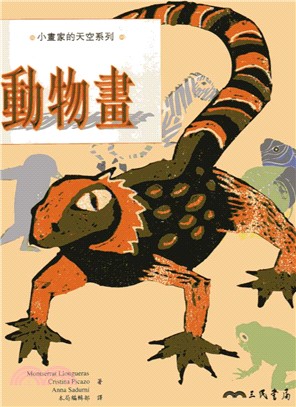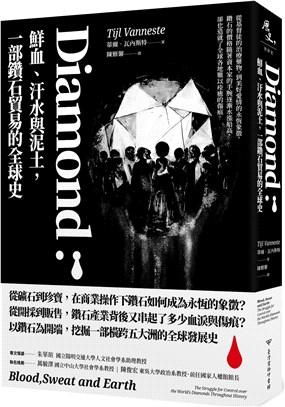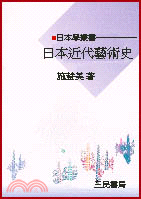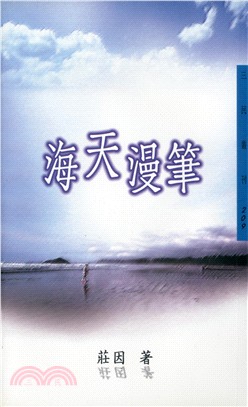Modern Phytomedicine - Turning Medicinal Plants Into Drugs
商品資訊
定價
:NT$ 13363 元優惠價
:90 折 12027 元
若需訂購本書,請電洽客服 02-25006600[分機130、131]。
相關商品
商品簡介
作者簡介
名人/編輯推薦
目次
商品簡介
This timely and original handbook paves the way to success in plant-based drug development, systematically addressing the issues facing a pharmaceutical scientist who wants to turn a plant compound into a safe and effective drug. Plant pharmacologists from around the world demonstrate the potentials and pitfalls involved, with many of the studies and experiments reported here published for the first time. The result is a valuable source of information unavailable elsewhere.
作者簡介
Iqbal Ahmad is a senior lecturer of agricultural microbiology at Aligarh Muslim University (AMU), India, and Principal Investigator of the Medicinal Plants Research Project of the University Grant Commission, New Delhi, India. A graduate of AMU, he worked as a research scientist at the Himalaya Drug Company before moving to the AMU's Faculty of Agricultural Sciences. He has so far screened more than 150 traditional Indian medicinal plants for their biological activities and potential prospection.
Farrukh Aqil is Project Fellow working on the major research project on medicinal plants at the AMU Department of Agricultural Microbiology. His current work includes biological activities of Indian medicinal plants against MDR bacteria, antioxidants, and the antimutagenicity potential of bioactive plant extracts.
Mohammad Owais currently holds a faculty position at the Interdisciplinary Biotechnology Unit at Aligarh Muslim University, India. He trained at CDRI, Lucknow and IMTECH, Chandigarh, and worked during his post doctoral training with Dr. R. C. Gallo's group at the NIH, USA. His present work is focusing on the screening of various herbal drugs for their potential to treat drug resistant infections, and developing and applying drug delivery systems to herbal drugs to assess the efficacy, stability and toxicity in animal models.
Farrukh Aqil is Project Fellow working on the major research project on medicinal plants at the AMU Department of Agricultural Microbiology. His current work includes biological activities of Indian medicinal plants against MDR bacteria, antioxidants, and the antimutagenicity potential of bioactive plant extracts.
Mohammad Owais currently holds a faculty position at the Interdisciplinary Biotechnology Unit at Aligarh Muslim University, India. He trained at CDRI, Lucknow and IMTECH, Chandigarh, and worked during his post doctoral training with Dr. R. C. Gallo's group at the NIH, USA. His present work is focusing on the screening of various herbal drugs for their potential to treat drug resistant infections, and developing and applying drug delivery systems to herbal drugs to assess the efficacy, stability and toxicity in animal models.
名人/編輯推薦
"...Primariliy, this book is dedicated, but also highly recommended, to students, teachers and researchers enganged in universities, R&D insitutions, pharmaceutical or herbal industry, as well as health organizations."
Advances in Food Sciences, 07/2007
Advances in Food Sciences, 07/2007
目次
Preface.
List of Contributors.
1 Bioactive Phytocompounds: New Approaches in the Phytosciences (Ricardo Ramos Mendonça-Filho).
1.1 Introduction.
1.2 Development of Fast Reliable Methods of Extraction and High-Throughoutput Screening (HTS) of Crude Plant Extracts: New Challenges.
1.3 Antimicrobial Bioactive Phytocompounds from Extraction to Identification: Process Standardization.
1.4 Problems Associated with the Efficacy, Stability and Quality Control of Herbal Drugs Preparations.
1.5 Novel Bioactive Phytocompounds Against Multidrug-Resistant Bacteria/Fungi: The Management of Infectious and Chronic Diseases.
1.6 Mode of Action of Bioactive Phytocompounds and their Interactions with Macromolecules and Toxicity.
1.7 Bioactive Phytocompounds and Future Perspectives.
References.
2 Quality Control, Screening, Toxicity, and Regulation of Herbal Drugs (Wickramasinghe M. Bandaranayake).
2.1 Introduction.
2.2 Preparation of Herbal Drugs.
2.3 Quality Control of Herbal Drugs.
2.4 Herbal Supplements.
2.5 Adulteration of Herbal Drugs.
2.6 Contamination of Herbal Drugs and Herb–Drug Interactions.
2.7 Toxicity of Herbal Drugs.
2.8 Screening of Herbal Drugs.
2.9 Labeling of Herbal Products.
2.10 Policies and Regulations.
2.11 Trends and Developments.
2.12 Conclusions.
References.
3 Herbal Medicines: Prospects and Constraints (Iqbal Ahmad, Farrukh Aqil, Farah Ahmad, and Mohammad Owais).
3.1 Introduction.
3.2 Prospects for Herbal Medicine.
3.3 Constraints in Herbal Medicine.
3.4 Good Manufacturing Practice (GMP) for Herbal Medicine.
3.5 Improving the Quality, Safety and Efficacy of Herbal Medicine.
3.6 Conclusions.
Acknowledgments.
References.
4 Bioactive Phytocompounds and Products Traditionally Used in Japan (Jin-ichi Sasaki).
4.1 Introduction.
4.2 Garlic.
4.3 Mushroom.
4.4 Sweetcorn.
4.5 Oil and Flavor of Tree Hiba (Japanese Cypress) (Hinokitiol).
4.6 Conclusions.
Acknowledgments.
References.
5 Plant Extracts Used to Manage Bacterial, Fungal, and Parasitic Infections in Southern Africa (J.N. Eloff and L.J. McGaw).
5.1 Introduction.
5.2 Biodiversity in Southern Africa.
5.3 Use of Plants in Southern African Traditional Medicine.
5.4 The Need for Anti-Infective Agents.
5.5 Selection of Plant Species to Investigate.
5.6 Collecting, Drying, and Storage of Plant Material.
5.7 Extraction of Plant Material.
5.8 Evaluating Quantitative Antimicrobial Activity.
5.9 Evaluating Qualitative Biological Activity.
5.10 Expression of Results.
5.11 Antibacterial Activity.
5.12 Results on Antibacterial Activity Obtained with Members of the Combretaceae.
5.13 Antifungal Activity.
5.14 Antiparasitic Activity.
5.15 Other Anti-Infective Research in South Africa.
5.16 Cytotoxicity.
5.17 Ethnoveterinary Research.
5.18 Determining the in vivo Efficacy of Extracts and Isolated Compounds.
5.19 Conclusion.
References.
6 Biological and Toxicological Properties of Moroccan Plant Extracts: Advances in Research (M. Larhsini).
6.1 Introduction.
6.2 Ethnobotanic and Ethnopharmacology of Traditional Moroccan Plants.
6.3 Toxicological Assays.
6.4 Conclusions.
References.
7 Anti-MRSA and Anti-VRE Activities of Phytoalexins and Phytoncides Isolated from Tropical Plants (Yoshikazu Sakagami).
7.1 Introduction.
7.2 Phytoalexins and Phytoncides.
7.3 Antibiotics.
7.4 Bacteria and Broth.
7.5 Isolation of Phytoalexins and Phytoncides.
7.6 Minimum Inhibitory Concentration.
7.7 Synergism of Antibacterial Compounds with Commercially Available Antibiotics.
7.8 Antibacterial Activities.
7.9 Synergism Between the Test Compounds and Commercial Antibiotics Against VRE, MRSA, VSE, and MSSA.
References.
8 Methods for Testing the Antimicrobial Activity of Extracts (Jenny M. Wilkinson).
8.1 Introduction.
8.2 Antibacterial Assays.
8.3 Antifungal Assays.
8.4 In vivo Assessment of Antibacterial and Antifungal Activity.
8.5 Methods for Assessing Antiviral Activity.
8.6 Screening of Plant Extracts for Antiparasitic Activity.
8.7 Conclusions.
References.
9 Targeted Screening of Bioactive Plant Extracts and Phytocompounds Against Problematic Groups of Multidrug-Resistant Bacteria (Farrukh Aqil, Iqbal Ahmad, and Mohammad Owais).
9.1 Introduction.
9.2 Approaches to Targeted Screening Against MDR Bacteria.
9.3 Other Potential Approaches.
9.4 Conclusions and Future Directions.
Acknowledgments.
References.
10 Activity of Plant Extracts and Plant-Derived Compounds against Drug-Resistant Microorganisms (Antonia Nostro).
10.1 Introduction.
10.2 Plant Materials with General Antimicrobial Activity Including some Drug-Resistant Strains.
10.3 Plant Materials with Specific Antimicrobial Activity Against Drug-Resistant Strains.
10.4 Plant Materials that Restore the Effectiveness of Antimicrobial Agents and/or Inhibit Drug Resistance Mechanisms.
10.5 Conclusions.
References.
11 An Alternative Holistic Medicinal Approach to the Total Management of Hepatic Disorders: A Novel Polyherbal Formulation (Mohammad Owais, Iqbal Ahmad, Shazia Khan, Umber Khan, and Nadeem Ahmad).
11.1 Introduction.
11.2 Conventional Medicines for Liver Disorders.
11.3 Herbal Medicines – Potential Therapeutic Agents with Minimal Side-Effects.
11.4 Contributions of Elementology to Potential Treatments for Hepatic Disorders.
11.5 Other Alternatives in Liver Therapy.
11.6 Conclusions.
References.
12 Traditional Plants and Herbal Remedies Used in the Treatment of Diarrheal Disease: Mode of Action, Quality, Efficacy, and Safety Considerations (Enzo A. Palombo).
12.1 Introduction.
12.2 Methods Used in the Evaluation of Bioactivity of Medicinal Plants.
12.3 Traditional Medicinal Plants Used in the Treatment of Diarrhea that Display Antimicrobial Activity.
12.4 Traditional Medicinal Plants Used in the Treatment of Diarrhea that Display Antidiarrheal Activity.
12.5 Phytochemical Analysis, Identification of Active Plant Components, and Mechanism of Action of Medicinal Plants Used in the Treatment of Diarrhea.
12.6 Quality, Efficacy, and Safety Considerations.
12.7 Conclusions.
Acknowledgments.
References.
13 Mutagenicity and Antimutagenicity of Medicinal Plants (Javed Musarrat, Farrukh Aqil, and Iqbal Ahmad).
13.1 Introduction.
13.2 Plants as Protective Agents Against DNA Damage.
13.3 Antimutagenic Properties of Edible and Medicinal Plants.
13.4 Mutagenicity of Plant Extracts and Phytocompounds.
13.5 “Janus Carcinogens and Mutagens”.
13.6 Chemical Nature of Phytoantimutagenic Compounds.
13.7 Assays for Mutagenicity and Antimutagenicity.
13.8 Paradigms in Antimutagenicity Research.
13.9 Conclusions.
References.
14 Potential of Plant-Derived Products in the Treatment of Mycobacterial Infections (Deepa Bisht, Mohammad Owais, and K. Venkatesan).
14.1 Introduction.
14.2 Current Therapy of Tuberculosis and Leprosy.
14.3 Need for Newer Antimycobacterial Drugs.
14.4 Plant Extracts.
14.5 Well-Characterized Plant-Derived Compounds.
14.6 Conclusion.
Acknowledgements.
References.
15 Ethnomedicinal Antivirals: Scope and Opportunity (Debprasad Chattopadhyay).
15.1 Introduction.
15.2 Antiviral Ethnomedicines Against Common Virus Families.
15.3 Major Groups of Antivirals from Plants.
15.4 Mixtures and Other Compounds.
15.5 Experimental Approaches.
15.6 Future Prospects.
15.7 Conclusions.
Acknowledgments.
References.
16 Immunomodulatory Effects of Phytocompounds (Buket Cicioglu Arıdogan).
16.1 Introduction.
16.2 Effect of Specific Medicinal Herbs on Immune System and Immune Cells.
16.3 General Properties of Echinacea Species.
16.4 Effects of Echinacea Species on the Immune System and Various Immune Cells.
16.5 Asteraceae.
16.6 Lithospermum erythrorhizon.
16.7 Guarana.
16.8 Side and Adverse Effects of Some Phytocompounds.
16.9 Conclusion.
References.
17 Use of a Liposomal Delivery System for Herbal-Based Therapeutics (with a Focus on Clove Oil) (Nadeem Ahmad, Maroof Alam, Iqbal Ahmad, and Mohammad Owais).
17.1 Introduction.
17.2 Rationale for Using Liposomized Formulation of Clove Oil.
17.3 Experiments Conducted to Develop Liposomal Clove Oil Formulation.
17.4 Conclusions.
References.
Subject Index.
List of Contributors.
1 Bioactive Phytocompounds: New Approaches in the Phytosciences (Ricardo Ramos Mendonça-Filho).
1.1 Introduction.
1.2 Development of Fast Reliable Methods of Extraction and High-Throughoutput Screening (HTS) of Crude Plant Extracts: New Challenges.
1.3 Antimicrobial Bioactive Phytocompounds from Extraction to Identification: Process Standardization.
1.4 Problems Associated with the Efficacy, Stability and Quality Control of Herbal Drugs Preparations.
1.5 Novel Bioactive Phytocompounds Against Multidrug-Resistant Bacteria/Fungi: The Management of Infectious and Chronic Diseases.
1.6 Mode of Action of Bioactive Phytocompounds and their Interactions with Macromolecules and Toxicity.
1.7 Bioactive Phytocompounds and Future Perspectives.
References.
2 Quality Control, Screening, Toxicity, and Regulation of Herbal Drugs (Wickramasinghe M. Bandaranayake).
2.1 Introduction.
2.2 Preparation of Herbal Drugs.
2.3 Quality Control of Herbal Drugs.
2.4 Herbal Supplements.
2.5 Adulteration of Herbal Drugs.
2.6 Contamination of Herbal Drugs and Herb–Drug Interactions.
2.7 Toxicity of Herbal Drugs.
2.8 Screening of Herbal Drugs.
2.9 Labeling of Herbal Products.
2.10 Policies and Regulations.
2.11 Trends and Developments.
2.12 Conclusions.
References.
3 Herbal Medicines: Prospects and Constraints (Iqbal Ahmad, Farrukh Aqil, Farah Ahmad, and Mohammad Owais).
3.1 Introduction.
3.2 Prospects for Herbal Medicine.
3.3 Constraints in Herbal Medicine.
3.4 Good Manufacturing Practice (GMP) for Herbal Medicine.
3.5 Improving the Quality, Safety and Efficacy of Herbal Medicine.
3.6 Conclusions.
Acknowledgments.
References.
4 Bioactive Phytocompounds and Products Traditionally Used in Japan (Jin-ichi Sasaki).
4.1 Introduction.
4.2 Garlic.
4.3 Mushroom.
4.4 Sweetcorn.
4.5 Oil and Flavor of Tree Hiba (Japanese Cypress) (Hinokitiol).
4.6 Conclusions.
Acknowledgments.
References.
5 Plant Extracts Used to Manage Bacterial, Fungal, and Parasitic Infections in Southern Africa (J.N. Eloff and L.J. McGaw).
5.1 Introduction.
5.2 Biodiversity in Southern Africa.
5.3 Use of Plants in Southern African Traditional Medicine.
5.4 The Need for Anti-Infective Agents.
5.5 Selection of Plant Species to Investigate.
5.6 Collecting, Drying, and Storage of Plant Material.
5.7 Extraction of Plant Material.
5.8 Evaluating Quantitative Antimicrobial Activity.
5.9 Evaluating Qualitative Biological Activity.
5.10 Expression of Results.
5.11 Antibacterial Activity.
5.12 Results on Antibacterial Activity Obtained with Members of the Combretaceae.
5.13 Antifungal Activity.
5.14 Antiparasitic Activity.
5.15 Other Anti-Infective Research in South Africa.
5.16 Cytotoxicity.
5.17 Ethnoveterinary Research.
5.18 Determining the in vivo Efficacy of Extracts and Isolated Compounds.
5.19 Conclusion.
References.
6 Biological and Toxicological Properties of Moroccan Plant Extracts: Advances in Research (M. Larhsini).
6.1 Introduction.
6.2 Ethnobotanic and Ethnopharmacology of Traditional Moroccan Plants.
6.3 Toxicological Assays.
6.4 Conclusions.
References.
7 Anti-MRSA and Anti-VRE Activities of Phytoalexins and Phytoncides Isolated from Tropical Plants (Yoshikazu Sakagami).
7.1 Introduction.
7.2 Phytoalexins and Phytoncides.
7.3 Antibiotics.
7.4 Bacteria and Broth.
7.5 Isolation of Phytoalexins and Phytoncides.
7.6 Minimum Inhibitory Concentration.
7.7 Synergism of Antibacterial Compounds with Commercially Available Antibiotics.
7.8 Antibacterial Activities.
7.9 Synergism Between the Test Compounds and Commercial Antibiotics Against VRE, MRSA, VSE, and MSSA.
References.
8 Methods for Testing the Antimicrobial Activity of Extracts (Jenny M. Wilkinson).
8.1 Introduction.
8.2 Antibacterial Assays.
8.3 Antifungal Assays.
8.4 In vivo Assessment of Antibacterial and Antifungal Activity.
8.5 Methods for Assessing Antiviral Activity.
8.6 Screening of Plant Extracts for Antiparasitic Activity.
8.7 Conclusions.
References.
9 Targeted Screening of Bioactive Plant Extracts and Phytocompounds Against Problematic Groups of Multidrug-Resistant Bacteria (Farrukh Aqil, Iqbal Ahmad, and Mohammad Owais).
9.1 Introduction.
9.2 Approaches to Targeted Screening Against MDR Bacteria.
9.3 Other Potential Approaches.
9.4 Conclusions and Future Directions.
Acknowledgments.
References.
10 Activity of Plant Extracts and Plant-Derived Compounds against Drug-Resistant Microorganisms (Antonia Nostro).
10.1 Introduction.
10.2 Plant Materials with General Antimicrobial Activity Including some Drug-Resistant Strains.
10.3 Plant Materials with Specific Antimicrobial Activity Against Drug-Resistant Strains.
10.4 Plant Materials that Restore the Effectiveness of Antimicrobial Agents and/or Inhibit Drug Resistance Mechanisms.
10.5 Conclusions.
References.
11 An Alternative Holistic Medicinal Approach to the Total Management of Hepatic Disorders: A Novel Polyherbal Formulation (Mohammad Owais, Iqbal Ahmad, Shazia Khan, Umber Khan, and Nadeem Ahmad).
11.1 Introduction.
11.2 Conventional Medicines for Liver Disorders.
11.3 Herbal Medicines – Potential Therapeutic Agents with Minimal Side-Effects.
11.4 Contributions of Elementology to Potential Treatments for Hepatic Disorders.
11.5 Other Alternatives in Liver Therapy.
11.6 Conclusions.
References.
12 Traditional Plants and Herbal Remedies Used in the Treatment of Diarrheal Disease: Mode of Action, Quality, Efficacy, and Safety Considerations (Enzo A. Palombo).
12.1 Introduction.
12.2 Methods Used in the Evaluation of Bioactivity of Medicinal Plants.
12.3 Traditional Medicinal Plants Used in the Treatment of Diarrhea that Display Antimicrobial Activity.
12.4 Traditional Medicinal Plants Used in the Treatment of Diarrhea that Display Antidiarrheal Activity.
12.5 Phytochemical Analysis, Identification of Active Plant Components, and Mechanism of Action of Medicinal Plants Used in the Treatment of Diarrhea.
12.6 Quality, Efficacy, and Safety Considerations.
12.7 Conclusions.
Acknowledgments.
References.
13 Mutagenicity and Antimutagenicity of Medicinal Plants (Javed Musarrat, Farrukh Aqil, and Iqbal Ahmad).
13.1 Introduction.
13.2 Plants as Protective Agents Against DNA Damage.
13.3 Antimutagenic Properties of Edible and Medicinal Plants.
13.4 Mutagenicity of Plant Extracts and Phytocompounds.
13.5 “Janus Carcinogens and Mutagens”.
13.6 Chemical Nature of Phytoantimutagenic Compounds.
13.7 Assays for Mutagenicity and Antimutagenicity.
13.8 Paradigms in Antimutagenicity Research.
13.9 Conclusions.
References.
14 Potential of Plant-Derived Products in the Treatment of Mycobacterial Infections (Deepa Bisht, Mohammad Owais, and K. Venkatesan).
14.1 Introduction.
14.2 Current Therapy of Tuberculosis and Leprosy.
14.3 Need for Newer Antimycobacterial Drugs.
14.4 Plant Extracts.
14.5 Well-Characterized Plant-Derived Compounds.
14.6 Conclusion.
Acknowledgements.
References.
15 Ethnomedicinal Antivirals: Scope and Opportunity (Debprasad Chattopadhyay).
15.1 Introduction.
15.2 Antiviral Ethnomedicines Against Common Virus Families.
15.3 Major Groups of Antivirals from Plants.
15.4 Mixtures and Other Compounds.
15.5 Experimental Approaches.
15.6 Future Prospects.
15.7 Conclusions.
Acknowledgments.
References.
16 Immunomodulatory Effects of Phytocompounds (Buket Cicioglu Arıdogan).
16.1 Introduction.
16.2 Effect of Specific Medicinal Herbs on Immune System and Immune Cells.
16.3 General Properties of Echinacea Species.
16.4 Effects of Echinacea Species on the Immune System and Various Immune Cells.
16.5 Asteraceae.
16.6 Lithospermum erythrorhizon.
16.7 Guarana.
16.8 Side and Adverse Effects of Some Phytocompounds.
16.9 Conclusion.
References.
17 Use of a Liposomal Delivery System for Herbal-Based Therapeutics (with a Focus on Clove Oil) (Nadeem Ahmad, Maroof Alam, Iqbal Ahmad, and Mohammad Owais).
17.1 Introduction.
17.2 Rationale for Using Liposomized Formulation of Clove Oil.
17.3 Experiments Conducted to Develop Liposomal Clove Oil Formulation.
17.4 Conclusions.
References.
Subject Index.
主題書展
更多
主題書展
更多書展本週66折
您曾經瀏覽過的商品
購物須知
外文書商品之書封,為出版社提供之樣本。實際出貨商品,以出版社所提供之現有版本為主。部份書籍,因出版社供應狀況特殊,匯率將依實際狀況做調整。
無庫存之商品,在您完成訂單程序之後,將以空運的方式為你下單調貨。為了縮短等待的時間,建議您將外文書與其他商品分開下單,以獲得最快的取貨速度,平均調貨時間為1~2個月。
為了保護您的權益,「三民網路書店」提供會員七日商品鑑賞期(收到商品為起始日)。
若要辦理退貨,請在商品鑑賞期內寄回,且商品必須是全新狀態與完整包裝(商品、附件、發票、隨貨贈品等)否則恕不接受退貨。




